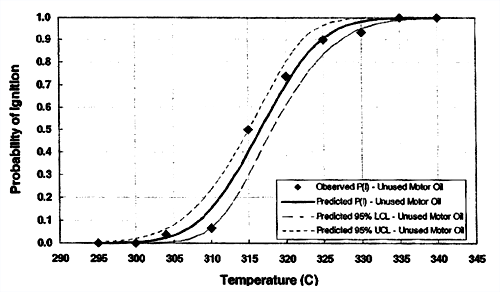Autoignition: Ignition Is a Probabilistic Function of Surface Temperature
Hot surface ignition of fluids involves a complicated function of factors, surface temperature being just one of them. Even at a constant surface temperature in the same engine, it is possible to have ignition at some times and not others. For example, if wind increases, the mixture may become too lean such that ignition is no longer supported. Some tests have shown that ignition of an underhood fluid in a controlled laboratory environment will have three ranges of surface temperature [1,2,3]:
The graph (below) showing this trend is included from one such study. For engine oil ignition, the probability of ignition below about 570 degrees F (300 degrees C) is near zero; it increases as shown to about 635 degrees F (335 degrees C), and ignition occurs predictably above that temperature [1].

To understand the potential for autoignition, compare the autoignition temperatures of the fluid in vehicle environments to the hypothesized surface temperature and determine which of the three regions of ignition probability is likely to be appropriate to the case being investigated.
References